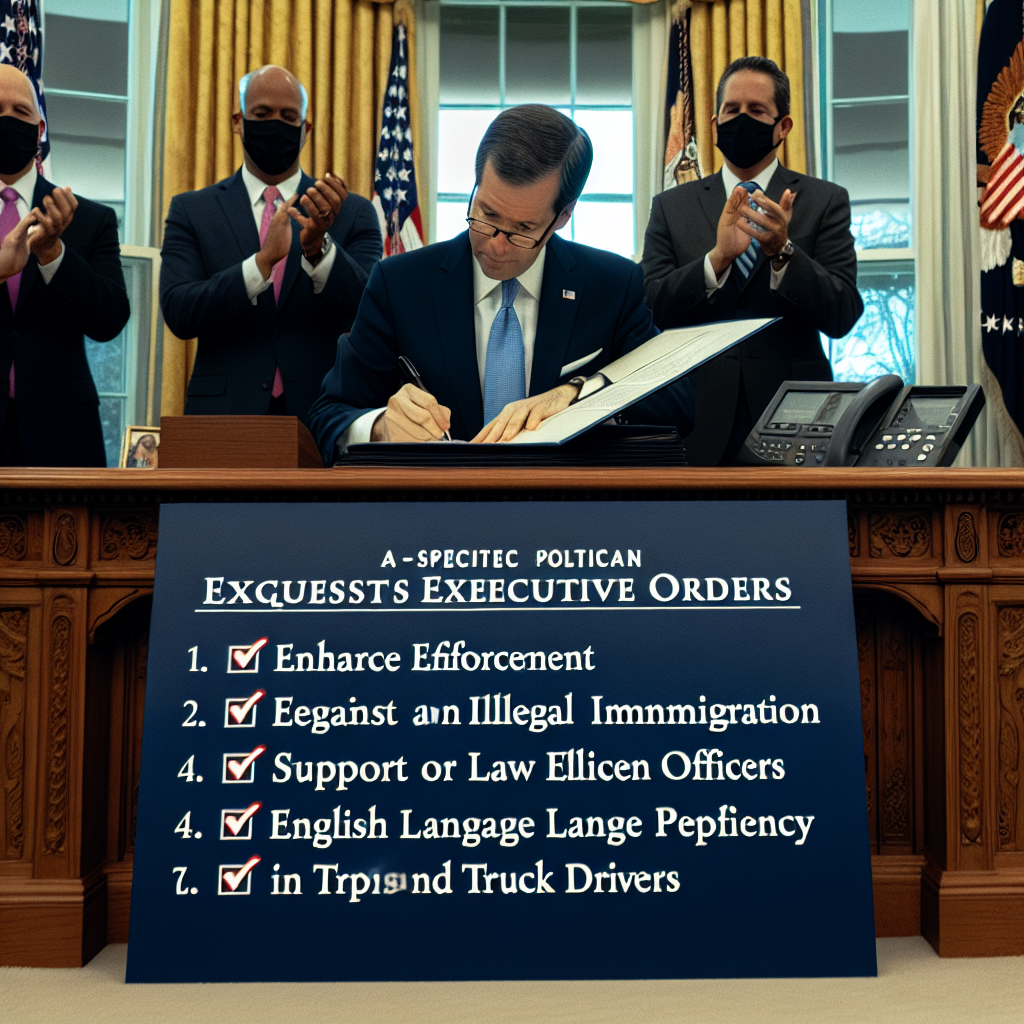On Monday, President Donald Trump signed three executive orders to further strengthen enforcement against illegal immigrants, support law enforcement officers, and raise the English language proficiency standards for truck drivers, continuing his tough immigration policies and public safety measures during his second term.
The first order signed by Trump requires the Attorney General and the Secretary of Homeland Security to publish within 30 days a list of states and local governments that do not cooperate with federal immigration enforcement and assess federal funding that could be withdrawn. Major “sanctuary cities” such as Chicago, Los Angeles, and New York City are among the key targets.
The order states that local officials obstructing federal immigration enforcement will be held criminally or civilly accountable, and federal agencies are required to ensure that illegal immigrants do not have access to federal resources such as social security benefits and public housing.
Previously, federal judge William Orrick of San Francisco issued an injunction prohibiting the Trump administration from withholding federal funding support for 16 sanctuary cities and counties.
Despite facing legal challenges, the Trump administration emphasizes that these measures aim to restore legal immigration processes and safeguard community security and the rule of law.
On that day, 100 photos of illegal immigrant felons suspected or convicted of serious crimes were prominently displayed on the White House lawn to highlight the threat to public safety posed by sanctuary policies.
The second order focuses on enhancing support for law enforcement officers, including providing more comprehensive training, salaries, and benefits, and ensuring they have legal protections when carrying out their duties. This move aims to ensure law enforcement officers can effectively enforce the law and safeguard community security.
The Trump administration underscores the need to strengthen resources of local law enforcement agencies and calls on the Department of Defense to release surplus military equipment to assist local police forces in enhancing security capabilities.
Simultaneously, the order calls for strengthening mechanisms for holding local officials accountable. Those found to obstruct law enforcement or engage in discriminatory behavior will be held accountable under the law to restore the rule of law and safeguard citizen safety.
The third order focuses on traffic safety, requiring commercial truck drivers to have sufficient English reading and speaking abilities to ensure they can accurately understand road signs, emergency instructions, and effectively communicate with law enforcement agencies.
The Trump administration points out that inadequate English proficiency increases the risk of traffic accidents, posing a significant threat to public safety.
In the future, the government will strengthen penalties for violative drivers and comprehensively review the process of issuing foreign driver’s licenses and other permits to ensure driver qualifications are legal and meet safety standards.
White House spokesperson Karoline Leavitt stated in a press briefing that these three executive orders are aimed at comprehensively combating illegal immigration, enhancing cooperation between local and federal law enforcement agencies, and raising the national security level.
She emphasized that despite objections from some federal judges, the Trump administration will persist in legally advancing reforms and, if necessary, consider suspending habeas corpus protections applicable to illegal immigrants to address the worsening issue of illegal immigration.
Border Policy Coordinator Tom Homan also added that these executive orders are part of the Trump administration’s strategy to defend national sovereignty and maintain public safety.
As of now, in the first 100 days of his re-election, Trump has signed over 140 executive orders, setting a new record for the number of executive orders signed at the beginning of a presidential term in the United States.
These orders cover various areas such as immigration, trade, energy, government organization, and social issues, demonstrating the Trump administration’s active use of executive orders to drive policy agendas and have a profound impact on domestic and foreign policy layout in the United States.

